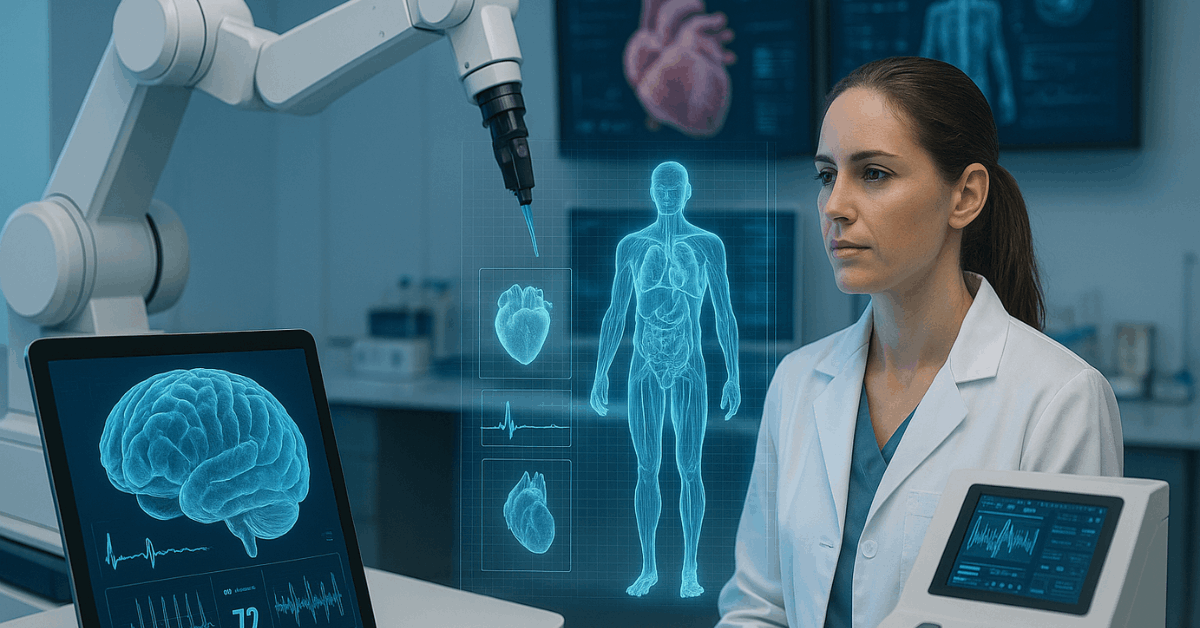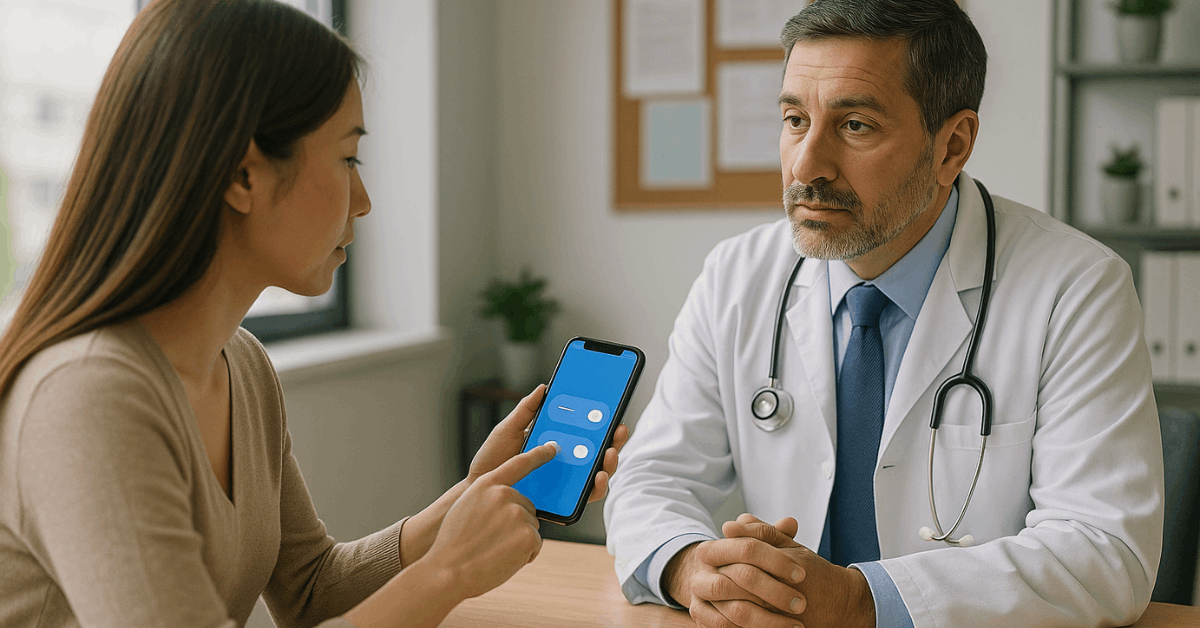New technologies in health and medicine are changing how care is delivered and received. You now have tools that make diagnosis faster and treatment more personalized.
These breakthroughs are not just trends; they’re transforming lives globally. In this article, you’ll learn about the best technologies shaping modern healthcare.
Artificial Intelligence in Healthcare
AI is being used across medical fields to improve efficiency and accuracy. From identifying diseases to managing patient data, AI is reshaping modern medicine.

AI in Diagnosis and Imaging
Artificial intelligence helps doctors detect diseases with greater speed and precision.
Tools like Google DeepMind and IBM Watson Health analyze images to find early signs of cancer or eye conditions.
This improves early intervention and patient outcomes. Hospitals now rely on AI for X-rays, CT scans, and MRIs.
Predictive Analytics for Risk Detection
AI systems study health data to predict future health risks. These tools alert doctors to possible heart attacks or complications before they happen.
Real-time monitoring and analysis help in proactive care. This leads to fewer hospitalizations and better long-term care.
AI-Powered Virtual Health Assistants
Chatbots are helping patients manage medications, book appointments, and even check symptoms. These assistants offer 24/7 support through apps and websites.
They reduce the burden on healthcare staff and improve access for patients. Mental health platforms also use AI to provide initial support.
Telemedicine and Remote Monitoring
Telehealth allows patients to consult doctors without visiting clinics. It’s now a core part of healthcare systems worldwide.
Virtual Consultations and Remote Care
Patients can now talk to doctors through video calls using apps or platforms. This reduces the need for travel and long waiting times.
Remote care is especially helpful for rural and elderly patients. It also supports follow-up care after surgeries or treatment.
Wearable Health Devices
Devices like Apple Watch and Fitbit monitor your heart rate, steps, and oxygen levels. They alert you to changes that might need medical attention.
These tools also help doctors track your health between visits. Some can even record ECGs or detect falls.
Remote Monitoring for Chronic Illness
Patients with heart problems or diabetes use special devices to track blood pressure, sugar levels, and other vitals.
These readings are sent to doctors automatically. Early warnings allow quick changes in treatment. This makes managing long-term illness easier and safer.
Robotics and Automation in Care
Medical robotics improves surgical accuracy and reduces human error. They also automate repetitive tasks in healthcare settings.
Robotic-Assisted Surgery
Surgeons now use robotic arms for delicate procedures. These systems offer high precision and smaller incisions.
Recovery time is shorter, and risks are reduced. Common areas include urology, gynecology, and heart surgery.
Automation in Hospital Operations
Hospitals use robots to transport supplies, deliver medication, and clean surfaces. This reduces staff workload and minimizes infection risks.
Automated systems can also manage inventory and restock items. These technologies speed up internal operations.
Exoskeletons and Mobility Support
Wearable exoskeletons assist patients during physical rehabilitation. Stroke survivors and injured individuals regain movement faster.
The devices support walking and strengthen muscles. They help patients become independent sooner.
Personalized and Precision Medicine
Medicine is shifting from a one-size-fits-all approach to treatments based on your unique biology.
Genetic Testing and Genomics
Genetic tests identify the risk of diseases and how you might respond to treatments. Services like 23andMe analyze DNA to give personal health insights.
Genomics is now used in cancer and rare disease treatments. This leads to more accurate and targeted care.
Pharmacogenomics
This field matches drugs to your genetic profile. It ensures you get the most effective medication with the fewest side effects. Doctors can avoid trial-and-error prescribing. It enhances safety and recovery rates.
Targeted Cancer Therapies
These therapies attack cancer cells based on their genetic makeup. They cause less damage to healthy tissues. This method is more effective for some types of cancer. It also improves survival rates.
3D Printing in Healthcare
3D printing is creating solutions that are faster, cheaper, and tailored to the patient.
Custom Prosthetics and Orthopedics
3D printers produce prosthetic limbs that match the patient’s size and needs. These are more affordable and quicker to make.
They are invaluable for children and disaster victims. This boosts comfort and usability.
3D Printed Organs and Tissues
Scientists are experimenting with printing human tissue. It may soon help test drugs or replace damaged body parts.
Research includes printing skin, bones, and blood vessels. This could reduce transplant waiting lists.
Surgical Planning and Education Models
Doctors use printed organs and body parts to plan surgeries. These models help them practice and reduce surgical errors.
Medical students also train using realistic 3D models. It improves learning and preparation.
Augmented and Virtual Reality in Medicine
AR and VR create simulations that train staff and support patients. These tools bring immersive learning and treatment support.
Training and Simulation for Medical Staff
Doctors and nurses use VR to practice surgeries or emergency responses. These simulations improve skills without patient risk.
It’s also used for anatomy education. Real-time feedback boosts performance.
AR in Real-Time Surgery Assistance
AR overlays patient data and 3D images during operations. Surgeons can see veins, organs, or tumors on smart glasses. It reduces guesswork and improves precision. This enhances safety and success.
VR for Pain Management and Mental Health
Virtual reality helps patients manage pain, stress, or PTSD. They use VR to escape stressful environments and focus on calming scenes.
Therapists use it for phobia and anxiety treatment. It’s a non-invasive, drug-free option.
Mobile Health and Smart Apps
Smartphones are now tools for monitoring, learning, and managing your health daily.
Wellness and Fitness Tracking
Apps track steps, sleep, water intake, and exercise. They help users stay motivated and set personal goals. Some connect with wearables for deeper insights. This supports preventive care.
Chronic Disease Management Apps
Apps log data for diabetes, asthma, and heart conditions. Users input symptoms, get reminders, and see trends.
Some apps alert doctors if readings are out of range. It keeps patients engaged in their care.
Medication Tracking and Adherence
Smart apps remind you when to take medicine and refill prescriptions. They track side effects and missed doses. This improves treatment success. Caregivers can also monitor loved ones.
Blockchain in Healthcare
Blockchain offers safer and more transparent health data sharing.
Secure Medical Records
Data stored on blockchain can’t be altered. Patients and providers can access trusted records anytime. It reduces medical errors from bad data. This also simplifies second opinions.
Patient Consent and Ownership
Patients can control who sees their health records. Permissions are managed through secure apps. It builds trust and privacy. Transparency boosts confidence.

Efficient Health Information Exchange
Blockchain speeds up the sharing of data between hospitals, clinics, and labs. It avoids duplication and missing files.
Doctors get a full view of your medical history. This supports fast, informed decisions.
Conclusion: The Future of Health Is Now
Healthcare is transforming fast through new technologies in health and medicine that impact every part of your life.
From AI to 3D printing and mobile apps, these innovations improve outcomes, efficiency, and access.
Each advancement in technology strengthens the capabilities of you and your healthcare providers. Stay informed and take part in the ongoing evolution of modern medicine.



